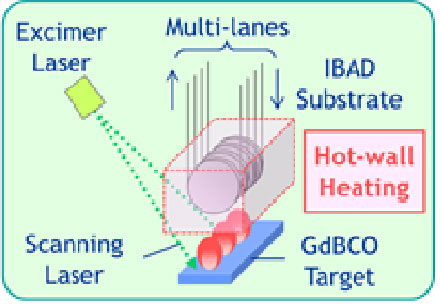WB-6-1-INV
High-rate and Homogenous Production of BMO-doped REBCO Coated Conductor by IBAD and Hot-wall PLD Process
14:00-14:30 29/11/2023
*Yasuhiro Iijima, Masaki Ohsugi, Kazuomi Kakimoto, Shogo Muto, Shinji Fujita, Wataru Hirata, Naonori Nakamura, Satoru Hanyu and Masanori Daibo
Fujikura Ltd., Chiba, Japan
REBCO coated conductors are advancing steadily as the unique practical wires available for emerging practical applications used in really large field, or severe thermal conditions. Above all, IBAD/PLD process can form wires which have excellent and uniform in-field Jc properties with robust mechanical strain strength. They are so suitable to current practical applications only attained with high field over 20 T as high-end NMR systems, and “compact” nuclear fusion, etc., which could not be reached by LTS wires as Nb3Sn. This talk describes current status and perspectives of REBCO coated conductor by mass productive Hot-Wall PLD process at Fujikura Ltd.
Pulsed-laser-deposition (PLD) is a non-equilibrium vapor process characterized to have high growth rate with quite largely supersaturated conditions though it has also excellent controllability of varied deposition conditions for complexed multi-element oxide films even in high enough oxygen pressure. It allows to control high density dislocations and small-size secondary phase particles, dispersed inside good textured REBCO films growing at very high rates.
In order to obtain longitudinal stability of thus optimized process conditions, we had designed and developed “Hot-Wall Type” reel-to-reel PLD apparatuses, which realized quite robust and reproducible temperature uniformity by furnace like heating system. As a result, we succeeded in commercialization of long length and uniform REBCO wires including BaHfO3 nano-rods. Eu has chosen as RE element for it has good growth stability enough for high production yield of long length BMO-doped REBCO wires. Almost no dependence on growth rate was observed for in-field Jc properties at 20K 20T, by using currently available industrial excimer laser.
We are now investing to develop productivity and quality control of those wires toward cost reduction and increase of production capacity, without spoiling uniformity for long piece length over 1 km long. Optimization of conductor thickness are also under way with varied width from 2 to 12 mm.
A part of this work is based on results from a project subsidized by the New Energy and Industrial Technology Development Organization (NEDO), and also results performed at the High Field Laboratory for Superconducting Materials, IMR, Tohoku University.
